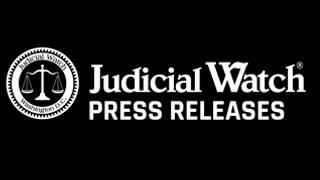

Amid Opioid Crisis at Home, U.S. Blows $50 Million on Leery Afghan Drug Treatment Programs


In the midst of an opioid epidemic in the United States, the government has blown tens of millions of dollars to treat drug addiction in Afghanistan and has no clue if the programs are working. Since 2002 American taxpayers have doled out an eye-popping $9 billion to counter drug production in the Islamic nation, the world’s top opium producer. The money largely flows through the State Department’s Bureau of International Narcotics and Law Enforcement Affairs (INL). As part of the broader effort, Uncle Sam spent $50.5 million on dozens of drug treatment programs between 2013 and 2018. The treatment projects are implemented by the United Nations on Drugs and a cooperative for economic and social development in Asia and the Pacific known as Colombo Plan.
The problem is that, like many of these costly global initiatives, the U.S. government writes the big checks, but doesn’t bother following up to assure they’re effective. In this case, a report published by the Special Inspector General for Afghanistan Reconstruction (SIGAR) slams the government for failing to monitor or evaluate the performance of its drug addiction projects in Afghanistan, writing that the State Department “does not know the impact to date of its investment.” Furthermore, the State Department didn’t even bother to conduct site visits to project locations and failed to maintain files or records required under agency rules. “Because INL has not evaluated the performance of its projects, INL cannot determine the progress or impact its drug treatment projects have had,” the report says.
The watchdog offers background information that explains why the U.S. is throwing so much money at this issue. Besides being a world-renowned producer of opium, Afghanistan has among the world’s highest per capita rates of drug users, between 2.9 million and 3.6 million. Among the favorite drugs are opium and heroin and around 31% of all Afghan households have at least one member who uses drugs. The State Department has tried to justify funding projects to counter the problem by pointing out that drug addiction causes a wide range of detrimental societal effects beyond health and welfare, including undermining economic development, reducing social and political stability and diminishing security. “To that end, the U.S. government has spent $8.9 billion on counter narcotics efforts” in Afghanistan, the new audit reveals.
So far it has been a humiliating failure. In fact, a few years ago Judicial Watch reported that the multi-billion-dollar investment actually resulted in a huge increase in Afghan poppy cultivation and opium production. Despite the free flow of American tax dollars to combat the crisis, opium production rose 43% to an estimated 4,800 tons, and approximately 201,000 hectares of land were under poppy cultivation, representing a 10% increase in one year alone. The embarrassing figures were laid out in an exhaustive quarterly report to Congress that was downright painful to get through. Judicial Watch reviewed the entire 269-page document and created a created a link for the counter narcotics section, which is around 19 pages and includes informative charts, graphs and the latest available statistics at the time.
The U.S. government’s troublesome counter narcotics effort is part of a larger and very costly failure involving the reconstruction of Afghanistan. More than $100 billion have been dedicated to help rebuild the war-torn country and much of it has been lost to waste, fraud and abuse not to mention corruption. Afghanistan reconstruction has been a huge debacle that continues fleecing American taxpayers. Judicial Watch has reported on the various boondoggles over the years, most of them documented in tremendous detail by the SIGAR. Highlights include the mysterious disappearance of nearly half a billion dollars in oil destined for the Afghan National Army, a $335 million Afghan power plant that’s seldom used and an $18.5 million renovation for a prison that remains unfinished and unused years after the U.S.-funded work began.
Among the more outrageous expenditures are U.S. Army contracts with dozens of companies tied to Al Qaeda and the Taliban. The reconstruction watchdog recommended that the Army immediately cut business ties to the terrorists, but the deals continued. Another big waste reported by Judicial Watch a few years ago, involves a $65 million initiative to help Afghan women escape repression. The government admits that, because there’s no accountability, record-keeping or follow-up, it has no clue if the program was effective. The $50.5 million drug treatment programs are simply the latest example.















